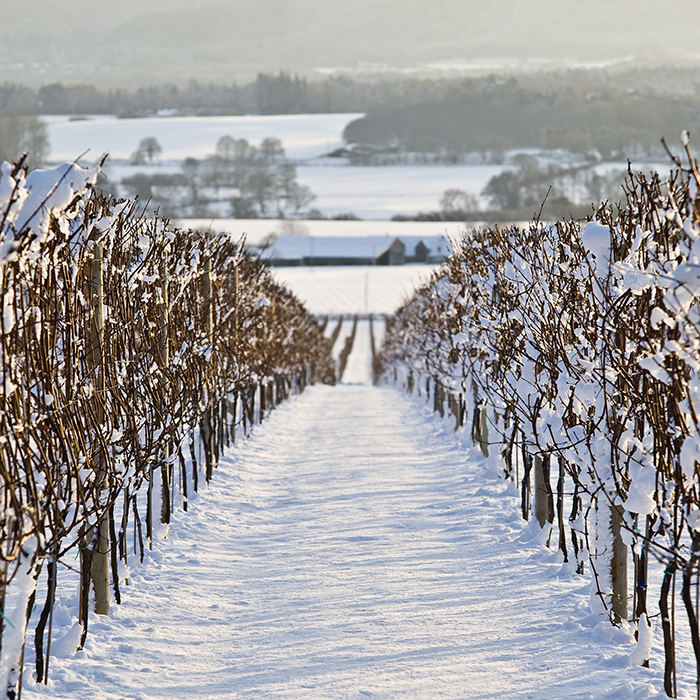Notes from the vineyard: hitting the base (wines)
Author: Guest Blogger

Nyetimber’s vineyards, dusted in snow in 2010
The first week back in January is one of the most exciting times of the year (we start well at Nyetimber!). This is because the base wines of the previous harvest have been settling and clarifying over the holiday period, and we now have our first chance to properly start assessing the wines of 2017. Up until now we’ve been trying as much as possible to let the wines be – not imposing too much upon them, or making significant assessments while the natural grape sugars are still present (sweetness can be seductive), distracting fermentation aromas persist and the wines are still cloudy. But now that the wines are dry and somewhat clear, we can start to understand exactly what 2017 has delivered.
This week we’ll begin a process of reviewing all the individual base wines, tasted blind. This gives us an idea of the characteristics of the year, and we can see – among other things – what has surprised us on the upside, or occasionally on the downside. Next, we’ll go through the wines knowing their identity or vineyard origin, which allows a further, deeper understanding of the wines. The initial blind tasting part gives an overall sense of quality, but tasting “sighted” gives context and allows us to focus in on the nuances of a site or block, based on our built-up history with the vineyard. This combined approach is very valuable, and the point is to build up as much information as possible on the wines, thereby forming our catalogue from which to select the blends. Because we want as careful an assessment as possible, we take our time with these first evaluations, only tasting about 10 to 12 wines at a time, and two sessions per day. This allows time for discussion between Cherie and I, but also keeps our palates fresh.
Meanwhile, in January pruning also gets underway in the vineyard. This is one of the most important jobs in the whole viticulture calendar, setting up the vines for the year ahead. At Nyetimber we use cane pruning (Guyot), which is labour- intensive manual work, but when done well allows one to understand and adapt to a vine. For each vine we can determine how much growth it has put on in the previous season, as well as assessing the vigour and balance, and we take full advantage of this up close and personal approach. Nyetimber wines come solely from estate-grown grapes, meaning our pruning team is visiting the same vines every year, and our viticulturist Ben Kantsler can lay down long-term plans to bring out the best in blocks. With this approach we can take steps every year to improve quality. There are measures throughout the season and at harvest to determine how well this is going, but an important part is also the base wine tastings that happen this month, and so the cycle continues…
There are just two posts remaining in this “Notes from the vineyard” series, and for the final parts I’ll be discussing the blending process, and also the preparations for getting these 2017 wines to bottle this spring.
Read the rest of our Notes from the vineyard series here, or find out more about Nyetimber on bbr.com.



I find this very interesting. thank you
Kind regards Ann
Thank you Ann.
Best Regards,
Brad